Spirit of India
Punarjani Village Munnar
Mother Masala Travels
The Spirit of Tradition
Punarjani Village Munnar. Positioned near the scenic foothills of Munnar in Kerala. This village’s name, translating to "reincarnation," evokes an intriguing connection to the preservation and revival of Kerala’s rich traditions. The village serves as a laid back cultural town where locals actively practice and safeguard ancient art forms, surrounded by tea-filled panoramas and cool climate.
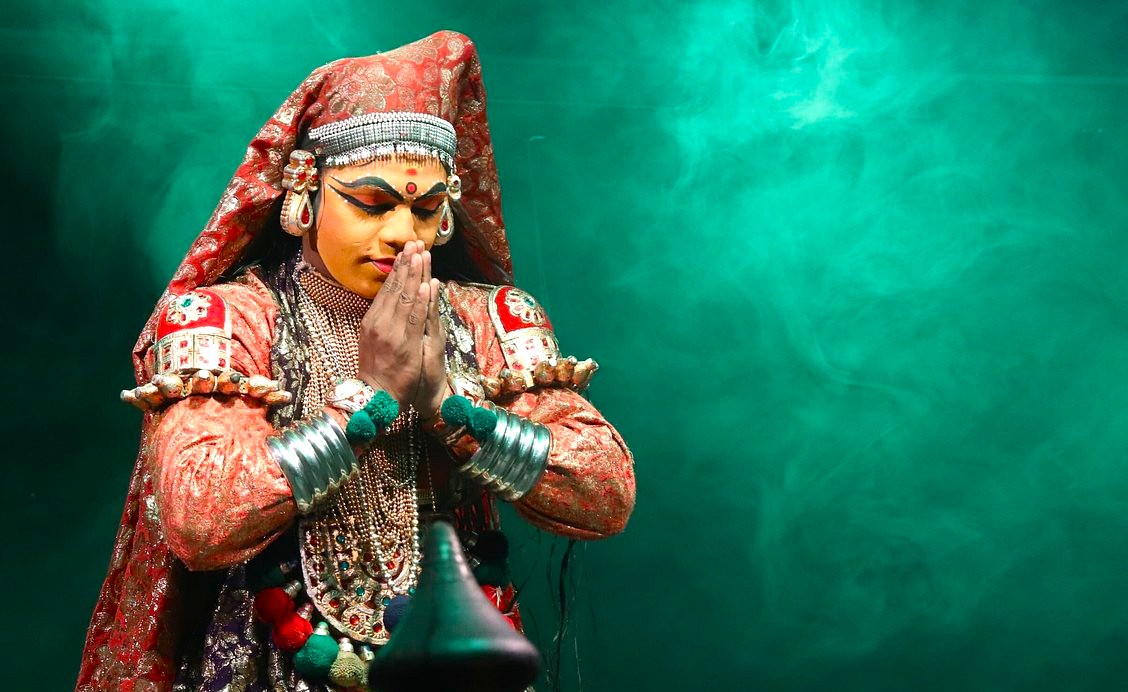
Punarjani Village Munnar: Sacred Spaces
We are intriqued by the artistry on display here. Kathakali, a traditional form of Indian classical theatre, embodies artistic precision and effort, captivating adiences for hours. Originating in Kerala during the 17th century under King Zamorin of Calicut, Kathakali epitomizes impeccable craftsmanship. The costumes themselves illustrate exceptional artistry through vivid colors, gold embellishments, and heavy textiles requiring weeks to prepare meticulously. Accompanying this, Kalaripayattu - the traditional martial art dating back over 3,000 years - represents not only athletic skill but historical heritage.
Kalaripayattu: Rare Traditional Martial Arts
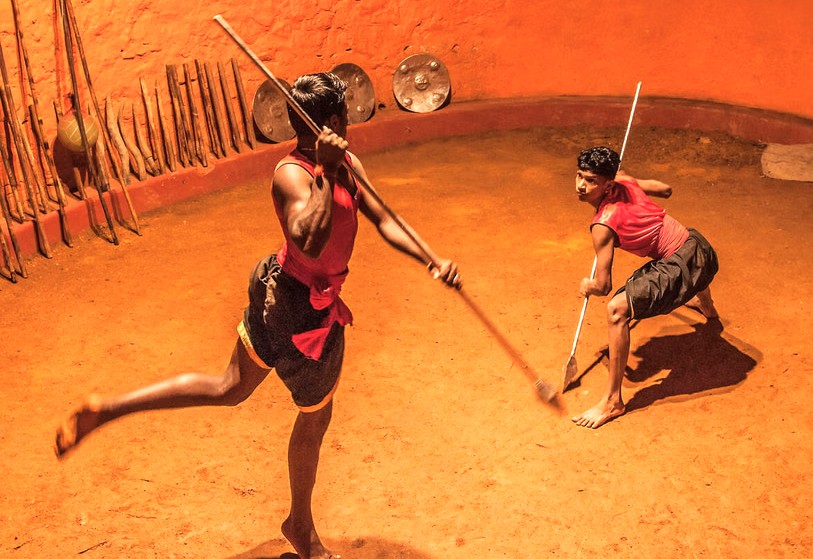
Experience the thrill of Kalaripayattu, an ancient martial art, at the Punarjani Cultural Centre Munnar. Inside a traditional earthen arena, two skilled performers demonstrate this powerful tradition, native to Kerala, Southern India. We witness their incredible agility and precision as they engage in a dynamic mock battle using long staffs, showcasing a discipline that is centuries old. This captivating display is more than just a performance - it’s a living piece of heritage. It shows a deep history of physical and mental discipline. The artists train hard to maintain these ancient techniques.
Capturing the Magic: A Photographic Haven
The richness of cultural experience and scenic environments makes Punarjani ideal for photography. Whether it’s the vivid patterns of Kathakali costumes or mist-covered hills of surrounding Munnar landscapes, every frame has the potential for stunning outcomes. As we capture elegantly lit moments or exquisite hand movements during recital stages, it feels like history itself unfolds through the lens.
Kathakali: Traditional Indian Dance
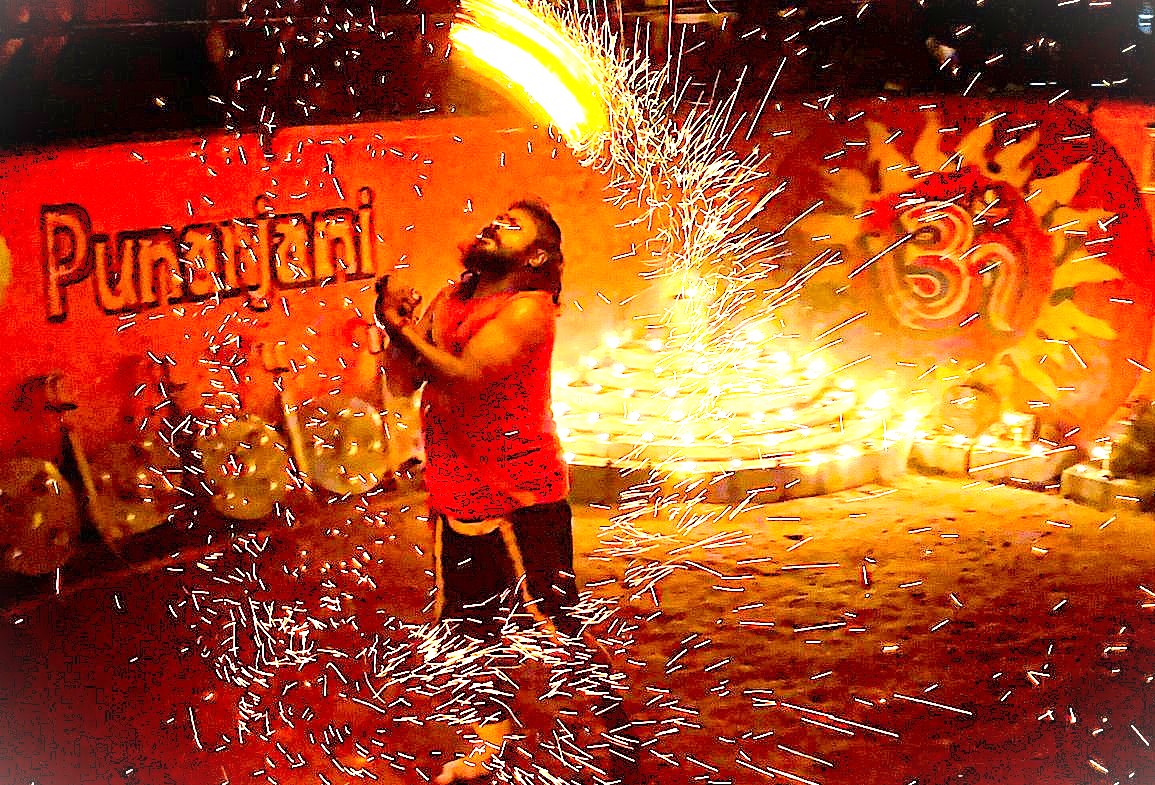
Step into the enchanting world of Kathakali, a traditional dance from Kerala, India. This unique art form is a beautiful blend of dance, drama, music, and devotion. We watch as performers, adorned in magnificent costumes and intricate makeup, tell epic stories from Hindu mythology without uttering a single word. Their every gesture, glance, and movement is filled with meaning, a language learned through years of dedicated training. It is a spectacular performance. This intricate storytelling conveys ancient narratives, each movement has a specific purpose.
A Culinary Journey: Savor the Flavour
This village introduces us to Kerala’s gastronomical specialties. Local homes and eateries share plates centered around simple-yet-powerful staples like appam and vegetable stew, often accompanied by roasted coconut and cardamom. Flavored rice dishes like biryani maintain influences from Mughal traditions yet uniquely integrate Malabar aromas.
The Connection with the Gods
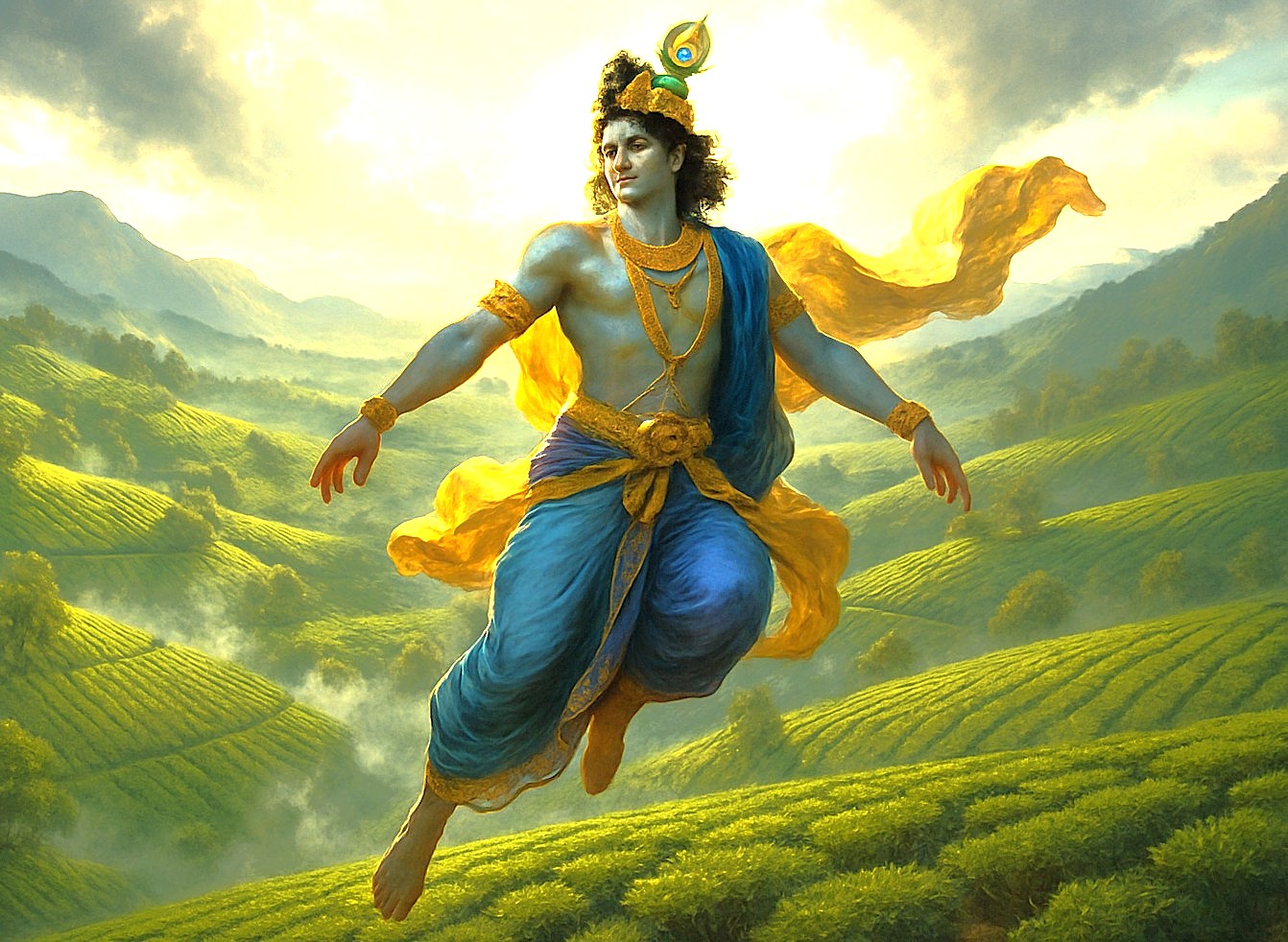
These performances embrace narratives rooted in Hindu mythology, bringing ancient tales to life through the powerful artistry of Kathakali. We discover characters like the divine Lord Krishna, whose playful antics, heroic deeds, and profound wisdom from the Mahabharata captivate audiences. We also see the valiant demon king Ravana, whose multifaceted story is told in the Ramayana. These mythological figures are depicted through precise gestures, elaborate costumes, and intricate facial expressions. Each movement carries deep meaning. The performers embody these roles with intense dedication.
Ancient Technologies: Sacred Sound, Geometry & Astrological Influences
Punarjani Village Munnar. Delving into the ancient sciences integrated within Village, we uncover the profound connection between these performances and traditional knowledge systems. The rhythms of Kathakali percussion resonate deeply, often mirroring natural frequencies that align with the harmony of the surroundings. Research into Solfeggio frequencies - such as 396 Hz, reputed to release fear and guilt - suggests how these sounds create a healing ambiance, immersing us in their serenity.
Serendipitous Meetings: Beyond the Main Path
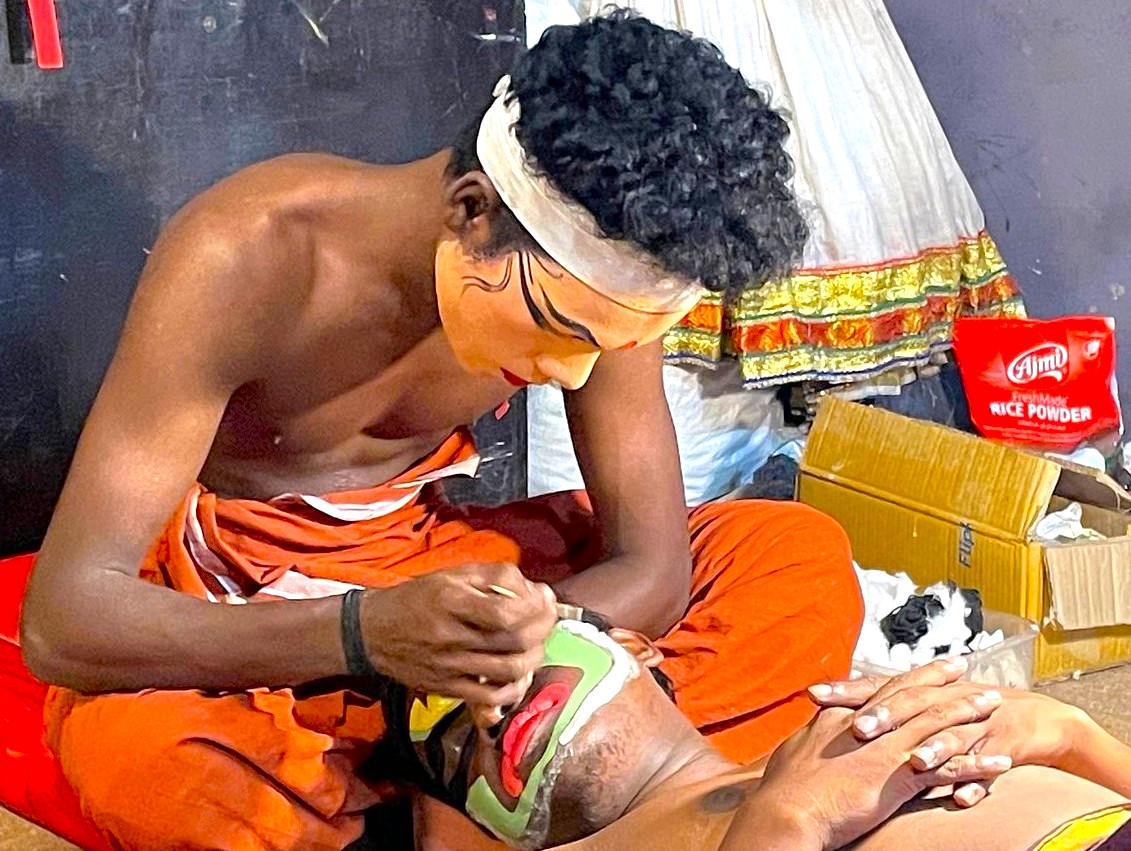
Walking casually beyond the performance stage, we encounter lively artisans weaving silks, forging tools, or dyeing vibrant paints. Nearby, smaller villages retain hidden crafts ranging from hand-pounded papads made from lentil flour to miniaturized sculptures sold directly by self-taught carvers. Agricultural grinders powered by human effort preserve slow grinding herbal oils for Ayurveda. These artisans proudly display their age-old techniques. We see their dedication and skill firsthand. These small businesses help sustain traditional skills. Our support aids their continued existence.
Resilience and Renewal: Overcoming Adversity’s Challenges
One story reveals how late medieval floods - 1325 CE, tested villages surrounding positioning communities unified toward redirecting diverted riverways saving prior irrigation above low fields height where vegetables survived stabilizing Munnar’s enduring agricultural formations nearby Punarjani village altogether sculpted resilient cooperative farming practices. Using self-sufficient survival approaches, today teaches returning interdependence restoring heritage lifestyles worth remembering eternally.
Urban Legends: Strange Sightings, Myths and Mysteries
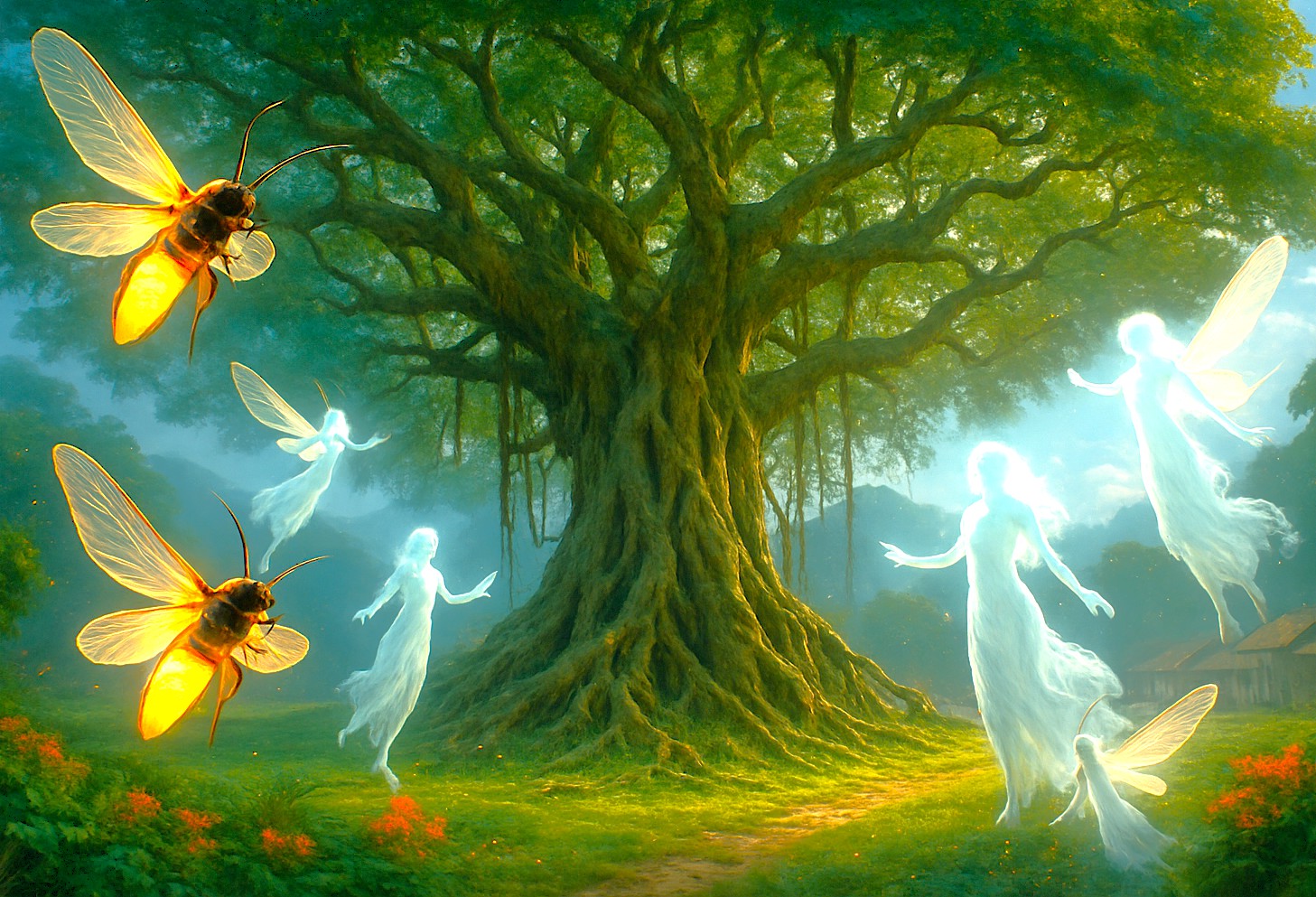
Near the eastern entrance stands a grand Banyan Tree, deeply looped within mysterious local myths. These timeless stories speak of spirits who stand as guardians. They are frequently cited as the protectors of the unique artistic ventures that take place on this sanctified ground. Locals talk of the appearance of glowing fireflies around the area. These are more than insects, their interpreted spiritually, as indicators of the divine presence. The tree itself is a symbol of strength. This lore connects us to the past and the locals share these tales happily with us.
Let’s Go Experience the Extraordinary: No More Excuses
Our adventure begins, and you’re invited to be a part of it. As we walk through this beautiful terrain, engage with the artistry of Punarjani Village, and savor the flavors of Kerala, you’ll find yourself completely immersed in a cultural and historical journey. Every step provides an opportunity to connect with the stories and traditions that have shaped this corner of the world. From witnessing the elegance of Kathakali to discovering the serenity of the surrounding tea plantations, this journey offers a peaceful and reflective escape from the ordinary. Come with us for your most unbelievable story yet.
Symphony of Generosity: Offerings from Wanderers to Residents
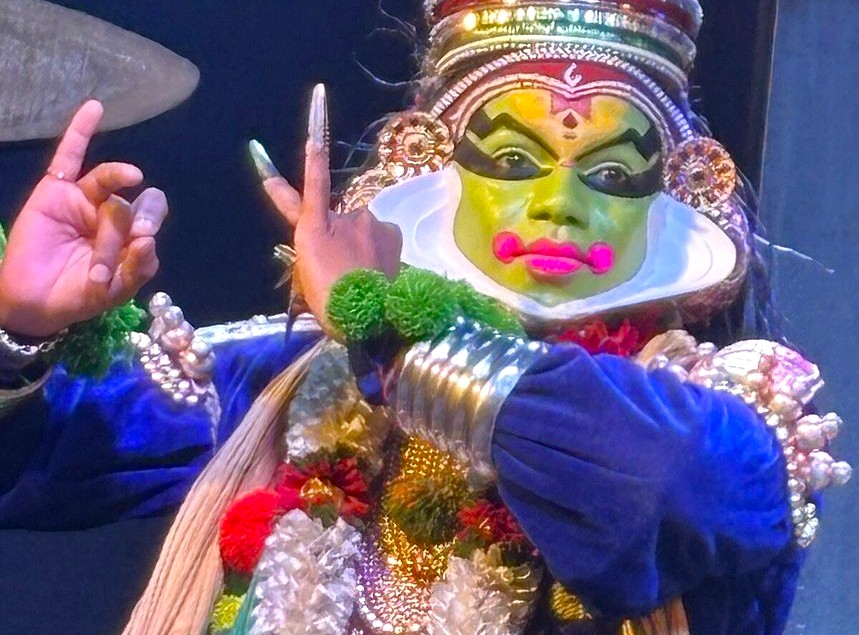
Punarjani Village Munnar. The interaction between locals and those who explore Punarjani Village is a two-way exchange of enrichment. As we learn about and support traditional art forms, we contribute to preserving an essential cultural heritage. In return, the residents share their knowledge, stories, and hospitality, creating a bond that transcends superficial encounters. This flow of generosity fosters a relaxed and welcoming mood, where everyone involved benefits from the connection. We experience their way of life firsthand. Our visits help keep these ancient practices alive for future generations.